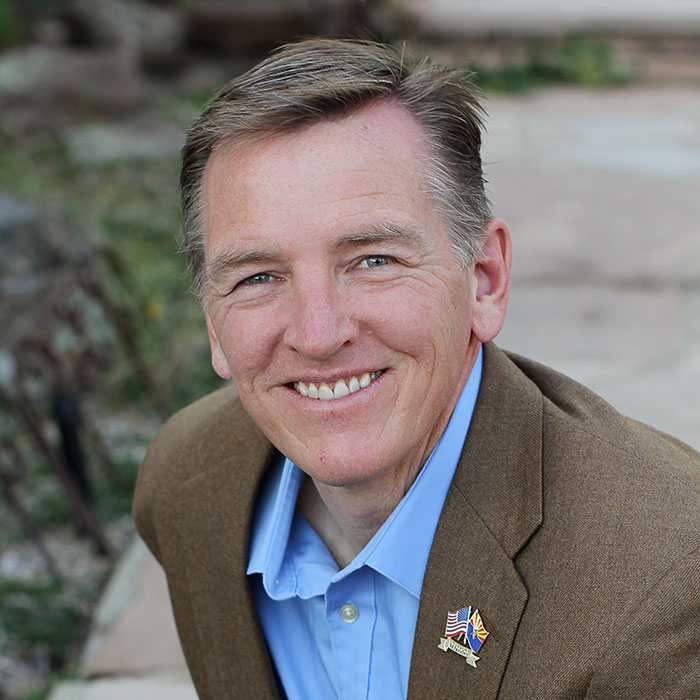|
Today, U.S. Congressman Paul A. Gosar, D.D.S. (AZ-04) released the following statement after participating in a House Natural Resources Subcommittee on Federal Lands hearing titled, “Challenges and Potential Solutions for the Bureau of Land Management’s Wild Horse & Burro Program”:
“Wild burros are creating significant challenges in Arizona and negatively impacting public safety, wildlife and natural resources. Further, misguided efforts to maintain unhealthy levels of burro and horse populations in the West are destroying rangelands as well as leading to animal starvation. Populations have exploded and failed management strategies have proven to be extremely costly and ineffective. Today, we had a great discussion on these issues and some of the potential solutions. I am hopeful that this important hearing will result in sensible solutions for combating these problems.”
During the hearing, Chairwoman of American Farm Bureau Federation Federal Lands Issue Advisory Committee Callie Hedrickson stated: “Wild horse and burro populations on public lands must be properly managed to prevent deterioration of rangeland resources and to minimize expense to the tax-paying public. Horse and burro numbers are far exceeding BLM’s Resource Management Plans (RMPs) within the (Herd Management Areas) HMAs, and large numbers of horses and burros are occupying private and federal lands outside of the HMAs.”
Keith Norris, Chair of the National Horse & Burro Rangeland Management Coalition, and Director of Government Affairs & Partnerships for The Wildlife Society stated: “Wild horse and burro populations already exceed ecologically-based population objectives, and their populations continue to grow at 15-20% per year. Overpopulation of horses and burros threatens the health of public rangelands and negatively impacts several other uses of public rangelands…Wild horse and burro populations currently exceed appropriate management levels (AML) by over 250%, primarily because of the presence of conflicting directives from Congress and the failure of the Bureau of Land Management (BLM) and the U.S. Forest Service (USFS) to comply with Wild Free-Roaming Horses and Burros Act (WFRHBA).
Dr. J.J. Goicoechea, testified on behalf of Public Lands Council, the National Cattlemen’s Beef Association, and the Nevada Cattlemen’s Association stating, “People who truly care about these animals are afraid to do the right thing because they may lose their way of life. How much longer can we turn a blind eye to the real issue? It is time to push the reset button and build a program, for the good of everyone and everything involved.”
Background:
In November of 2015, Congressman Gosar was joined by 19 other bicameral members of Congress in sending a letter to Bureau of Land Management Director Neil Kornze raising significant concerns about management strategies for wild horse and burro populations. That letter can be found HERE.
Wild burros are creating significant threats to public safety in Arizona. For example, in a three-year period in Bullhead City, there were 32 accidents involving burros and vehicles. In the Phoenix area during that same time frame, there have been 121 burro incidents and the BLM documented 55 burros that were killed on roadways. Burros are also negatively impacting other wildlife and natural resources.
Earlier this year, Congressman Gosar urged the House Appropriations Committee to take action to address the burro population problem. The Committee responded favorably to his request that sought to allow states to assist with managing wild burro populations by including important language in the Interior Appropriations Committee Report stating, “The Committee further directs the Bureau to work cooperatively with States and other partners to control wild horse and burro herds.”
(From the House Natural Resources Committee): Tens of thousands of wild horses and burros, not native to North America, are currently roaming federal lands across the western United States. Although BLM is authorized to remove excess animals to prevent overpopulation and rangeland damage, the agency recently announced that there are over 67,000 wild horses and burros currently on western federal rangelands—a 15% increase over estimated 2015 population figures. These populations typically grow by 18-20% per year and double in size every 4-5 years. Without additional removals or other means to check exploding on-range populations, including fertility control, population figures will continue to rise steeply.
The large number of wild horses on the range has had serious consequences, including significant rangeland degradation, overgrazing, competition for food and water among ungulates, water quality impacts, devaluation of federal lands, and deteriorating habitat for wildlife species like the Greater Sage-Grouse. In addition, there have been negative impacts to the animals themselves, including starvation, dehydration, and death.
|
